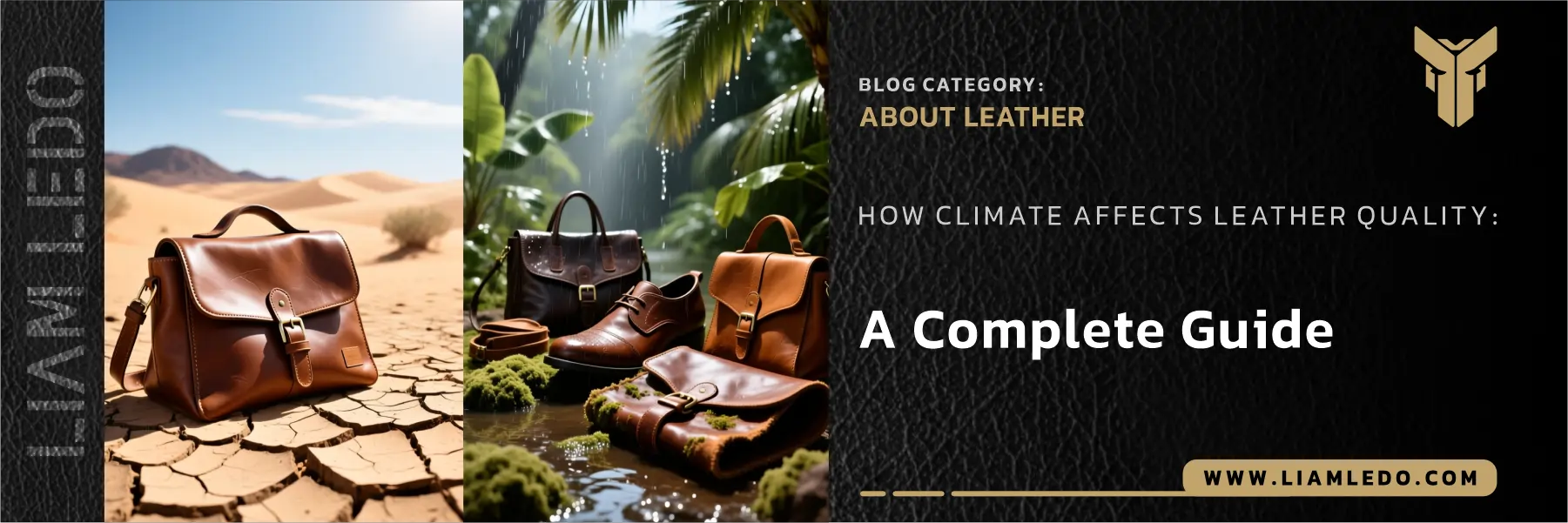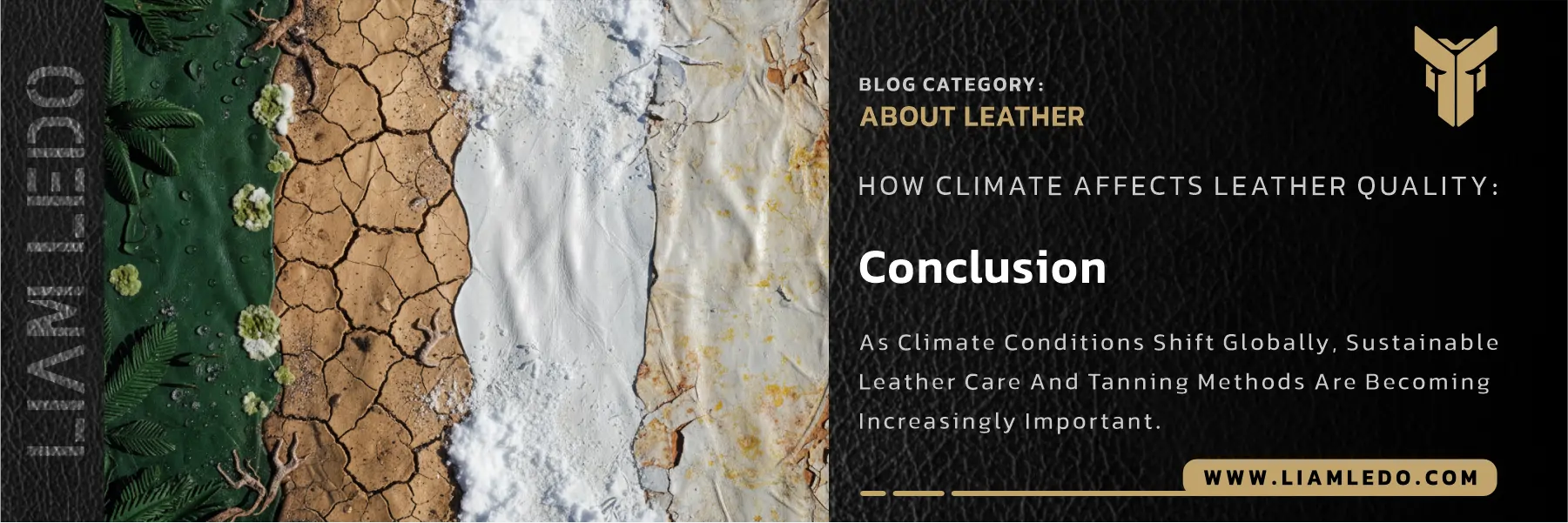
Leather has been valued for centuries for its durability, flexibility, and timeless appearance. Yet, one crucial factor often overlooked is how climate affects leather quality. From temperature extremes to humidity levels, environmental conditions can significantly influence how leather performs, feels, and ages. Understanding these effects is essential for manufacturers, artisans, and consumers who want their leather products to stand the test of time, ensuring lasting beauty and performance in any environment.
Learn more about leather and make better choices:
1.Understanding Leather as a Natural Material:
Leather is made from animal hides through processes such as vegetable tanning or chrome tanning. Being a natural material composed of collagen fibers, it is inherently sensitive to external elements. The structure of the hide retains organic properties, meaning it reacts to moisture, heat, UV exposure, and even air quality.
This organic nature is precisely why climate-related changes—both in production and in storage—play such a significant role in determining leather durability and long-term performance.
2.Temperature Effects on Leather Quality:
Temperature extremes can alter the chemistry and flexibility of leather:
- High heat accelerates the evaporation of natural oils from leather, leading to stiffness, cracking, and loss of luster.
- Excessive cold can make the material brittle, particularly in leathers with low moisture content.
- Rapid temperature fluctuations cause expansion and contraction of the fibers, resulting in surface warping or structural weakness.
In climates with consistently high temperatures, untreated leather can quickly deteriorate unless it’s conditioned with natural oils and stored properly.
2.1.Humidity and Moisture Content:
Humidity levels have a profound impact on how leather reacts over time.
- High humidity: Encourages mold and mildew, causing discoloration, unpleasant odors, and fiber decay.
- Low humidity: Dries leather out, making it brittle and prone to cracking.
The ideal storage environment for most types of leather is around 40–60% relative humidity, which maintains flexibility and prevents microbial growth.
Example:
In tropical climates, vegetable-tanned leather may absorb excess moisture and darken in tone, while chrome-tanned leather can resist warping but may still develop surface mold if not ventilated.
2.2.Sunlight and UV Exposure:
Prolonged exposure to sunlight can:
- Fade leather’s natural and dyed colors.
- Break down the collagen fibers, weakening the hide.
- Increase surface dryness, accelerating wear.
In hot, arid regions, products like leather bags or upholstery kept near windows may show premature signs of patina evolution or fading after just a few months.
Prevention: Use UV-protective leather finishes or store items away from direct sunlight.
2.3.Regional Climate Variations and Leather Performance:
Different parts of the world pose unique challenges for leather:
- Tropical climates: High moisture and heat promote mold; regular cleaning and conditioning are essential.
- Dry deserts: Low humidity draws oils out of leather, requiring frequent moisturizing.
- Cold, wet regions: Constant exposure to damp conditions can lead to water stains, salt marks, and hardening when leather dries.
- Urban industrial zones: Air pollution and acidic particles can damage or discolor leather surfaces.
These variations mean that the best leather care routine depends heavily on where you live and where the item is used.
2.4.Climate Impact During Leather Production:
Climate doesn’t just affect leather after it’s made—it influences the tanning process itself.
- Vegetable tanning in humid climates may require longer drying stages to avoid uneven finishing.
- Chrome tanning in high-temperature settings risks rapid dehydration of hides, requiring careful moisture control.
- Seasonal conditions can impact grain texture and surface smoothness, ultimately affecting quality grading.
Hence, tanneries often adapt their processing methods according to regional weather patterns.
2.5.Extending Leather Life in Challenging Climates:
To maintain premium leather quality regardless of climate, consider these precautions:
- Condition regularly: Use conditioners formulated for your type of leather to maintain moisture balance.
- Store in breathable covers: Cotton or muslin bags allow airflow while protecting from dust.
- Avoid plastic storage: Traps moisture and encourages mold growth.
- Rotate usage: Especially for footwear in humid climates to allow natural drying.
- Clean after exposure: Remove dust, salt, or water stains immediately.

Conclusion
As climate conditions shift globally, sustainable leather care and tanning methods are becoming increasingly important. Eco-friendly tanning reduces harmful chemical residues, while water-efficient production techniques adapt better to drought-prone regions.
Similarly, consumers can help by choosing high-quality leather designed to withstand a range of environmental challenges rather than opting for cheap, short-lived substitutes. By investing in durable, climate-resistant leather, they not only enjoy long-lasting quality but also support sustainable and responsible craftsmanship.
Source: The Gentleman’s Gazette | Wikipedia







